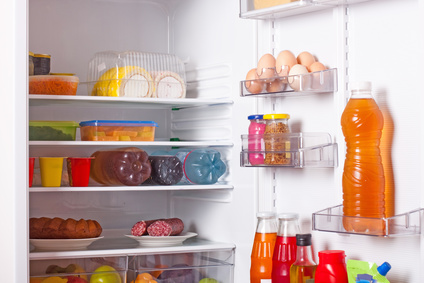
According to the FDA's current No Observed Adverse Effect Level (NOAEL) for BPA , the safe level of exposure to this toxin is 50 micrograms per kilogram of body weight per day. But it seems this amount is not safe for everyone; the research team looked at the effects of prenatal BPA exposure in rats, including BPA levels as low as just 2.5 and 25 micrograms. And they found that even at the lowest level of exposure, negative effects on brain development could be observed.
Heather Patisaul, professor of biology at NC State, worked alongside Ph.D. candidate Sheryl Arambula to conduct the research. The pair found that even the most minuscule amount of exposure produced changes in the expression of several hormone receptors in the newborns' amydalas -- including those for androgen, estrogen and oxytocin. The amygdala is a part of the brain that plays a substantial role in emotional and stress responses. According to Arambula, the hormone androgen is critical for forming differences between female and male brains.
In addition to changes in hormone receptors, BPA exposure also altered genes that are essential for neurodevelopment and synapse transmission. In Patisaul's previous research, they also found that BPA exposure elicited changes to other regions of the brain, including the hippocampus and hypothalamus. Her studies on BPA have focused on the brain and behavior, and are part of a research consortium known as CLARITY-BPA. CLARITY-BPA is multi-faceted initiative featuring many organizations investigating BPA.
Patisaul stated, "There is now a wealth of data showing that BPA can alter neurodevelopment. There is no question that prenatal BPA exposure at levels currently considered safe for humans affects hormone-sensitive gene expression in the developing rodent brain, suggesting that what we consider 'safe' for human brains may need to be re-evaluated."
It should come as no surprise that pregnant women should avoid BPA at all costs; past research has long pointed to the endocrine-disrupting effects of this toxic chemical. It's well understood that children, infants and developing fetuses are the most susceptible to the harmful effects of BPA. Last year, researchers in Denmark also found that BPA is toxic at far lower levels than estimated by the government.
Recent research has also shown that exposure to BPA during infancy can reduce biodiversity in the gut, which may set the stage for inflammation and illness.
Indeed, it would seem that the hazardous effects of BPA extend to multiple organ systems in children -- raising even greater concern. Research is clearly starting to show that the level of BPA exposure deemed "acceptable" by the government clearly isn't safe -- but there are many ways to reduce your potential exposure to BPA. One of the easiest ways to avoid BPA is by steering clear of plastic water bottles. Staying away from plastic food containers is another key step for pregnant women and children -- and food that has been reheated in plastic containers should be avoided as well. [Related: Read more stores like this at Toxins.news.]
Sources for this article include:
Please contact us for more information.























